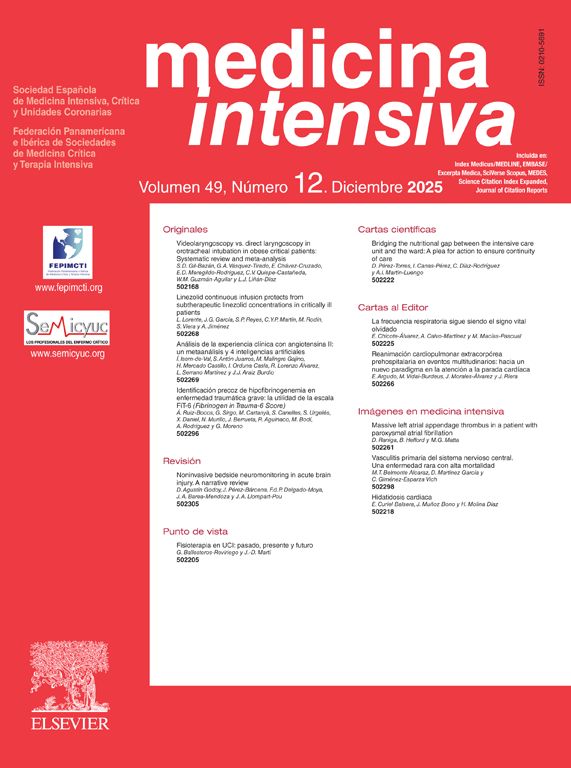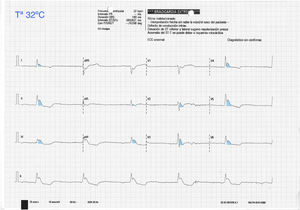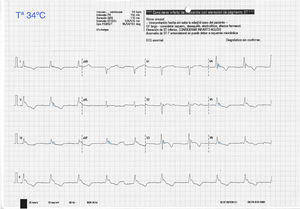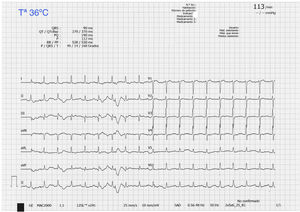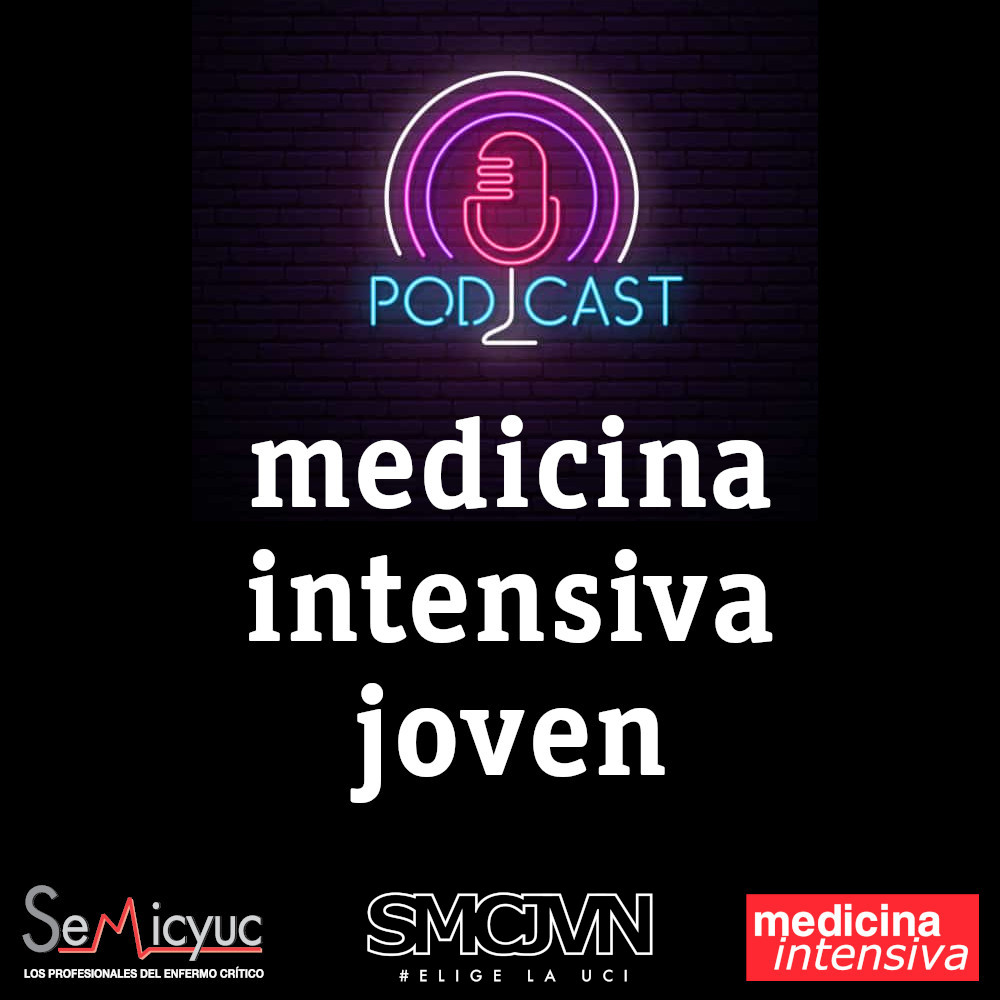An 80-year-old male was found in his home with bradycardia (30 bpm), lowered consciousness and severe hypothermia. Lung isolation was performed in the emergency room, followed by admission to intensive care.
With a body temperature of 32 °C, the ECG tracing evidenced extreme bradycardia (30 bpm), and both the leads of the extremities and the chest leads showed marked positive deflection between the QRS complex and the start of the T-segment, classically known as Osborn’s J-wave (Fig. 1). With the application of warming methods, normothermia was restored within the first 24 h of admission. During the temperature recovery process, the deflection gradually decreased in voltage and finally disappeared (Figs. 2 and 3).

